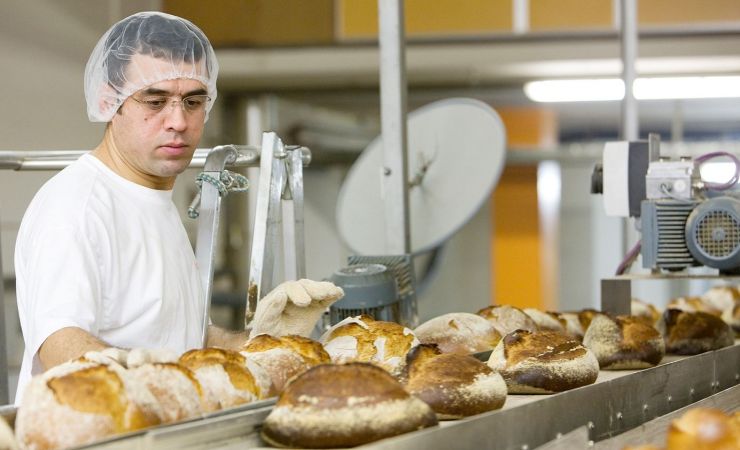Ken Moir, vice president of marketing at NiceLabel, shares his thoughts on the future for the labelling market, and label management.
‘The digitalisation and modernisation trends associated with broader IT are undoubtedly driving the labelling market as we look to 2020 and beyond. These trends are fuelling the development of the market and will accelerate over time. The combination of digitalisation and modernisation in enterprise resource planning (ERP), for example, is transforming systems with SAP software solutions in use today rapidly migrating from SAP ECC into the new business suite of SAP S/4HANA.
‘That’s just one example but it is important because it is part of a wider IT modernisation trend that ultimately impacts on labelling. When large enterprises update ERP, one of the natural consequences is that they will subsequently modernise their labelling systems and often migrate to, or implement a new standardised global labelling solution.
‘In other words, the impact on labelling is part of a wider chain of events driving IT modernisation. And that chain is accelerating as new technology comes on stream. That is why we are seeing a pipeline of new opportunities for global labelling solutions or label management systems today across the industry that is larger than we have witnessed for many years. And we expect to see these trends speed up not just during 2020 but increasingly throughout the decade.
‘That chain of events is also increasingly leading to a modernisation of hardware systems – something we again expect to see happening more and more throughout 2020 and beyond. As Windows mobile computers reach end-of-life organisations are changing them to Android mobile computers.
‘The next link in the chain is that businesses start to standardise their printer estate. Instead of having multiple brands and models in place, they standardise on one brand and even one model. That reduces costs and the administrative burden as operations become more efficient and there is less need for support, even around basic tasks like loading media and changing printer settings, less operator training, fewer spare parts to stock and less unplanned downtime. It is a classic example of less is more. That, in a sense, is what is happening in the industry today and what we see accelerating in the future but we are also witnessing a raft of newer trends coming into play that are set to impact the industry over the coming years. Take the migration to cloud, for example. This is already underway – and cloud labelling solutions are already up and running. Often though, some elements are still on-premise. Printer drivers that generate the printer command languages are still often located on local servers. Even they will move to the cloud over time.
‘In fact, driven by the latest evolution of the Internet of Things (IoT), the printers themselves will increasingly become connected. The technological capability has been in place before but the rest of the market has not been advanced enough to take advantage. Over the next decade, the advent of driverless printers in the cloud will be a key benefit for businesses as the migration to the cloud gathers pace.
‘In line with this, we will also see higher levels of cloud-to-cloud integration both of business systems generally and also of label management systems. The move to the cloud will reduce the complexity of the process for businesses and make label management simpler and more efficient.
‘Another trend we see accelerating is the convergence of labelling and marking. Most label printing in the past has been traditional thermal printing. Direct marking typically comprises continuous inkjet printing and laser etching. Historically, the two areas have been separate when it comes to management but they are now coming together, with users increasingly saying they want to use one system for both technologies.’
A look at regulation
‘Regulation across the sector has become more stringent in recent years and we only see that increasing in 2020 and beyond,’ continues Mr Moir. ‘The rules around labelling of allergens have been tightened in recent times and it is key that businesses ensure their labelling is 100% accurate in this area, not only for compliance but also in terms of public trust.
‘Moreover, the EU is to introduce a new medical device regulation (MDR) in May 2020. It is important that businesses operating in this area work with label management system providers that enable them to maintain a validated, compliant labelling solution. Added to this, we are seeing Russia introduce serialisation requirements on everything from alcohol to pharmaceuticals to fur. And as a result, large international businesses who trade with Russia are having to customise their labelling in order to comply.
‘The final area to cover here is RFID. We are seeing rapid adoption of this technology in the apparel and garment sector in particular – and there is nothing to indicate this trend is going to go away during 2020. In fact, we would expect other industries to adopt it in the future.’
He concludes, ‘In summary, as we look to 2020 and beyond these are exciting times for the labelling and label management industries. Trends like stricter regulation, serialisation and the growth of RFID will continue to impact the sector but it is the modernisation and digital transformation of the whole sector, including the move to cloud-based options, that is having the most profound impact of all on the labelling and label management markets today.’
Read the November/December issue of Digital Labels & Packaging for more future trends to look out for
Pictured: Swiss food manufacturer Coop is working with NiceLabel to streamline and improve its labelling processes at its factories and in-store bakeries






